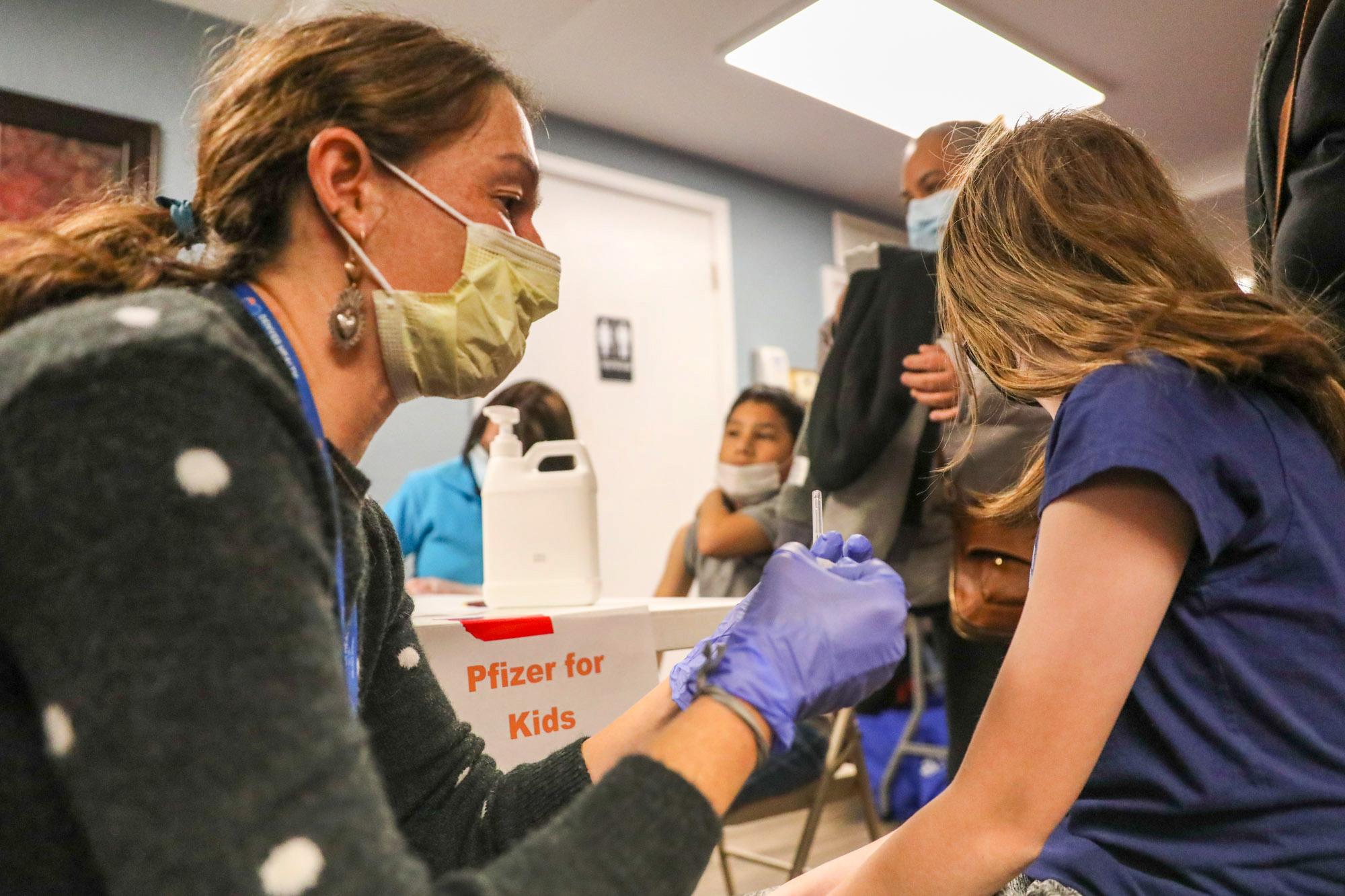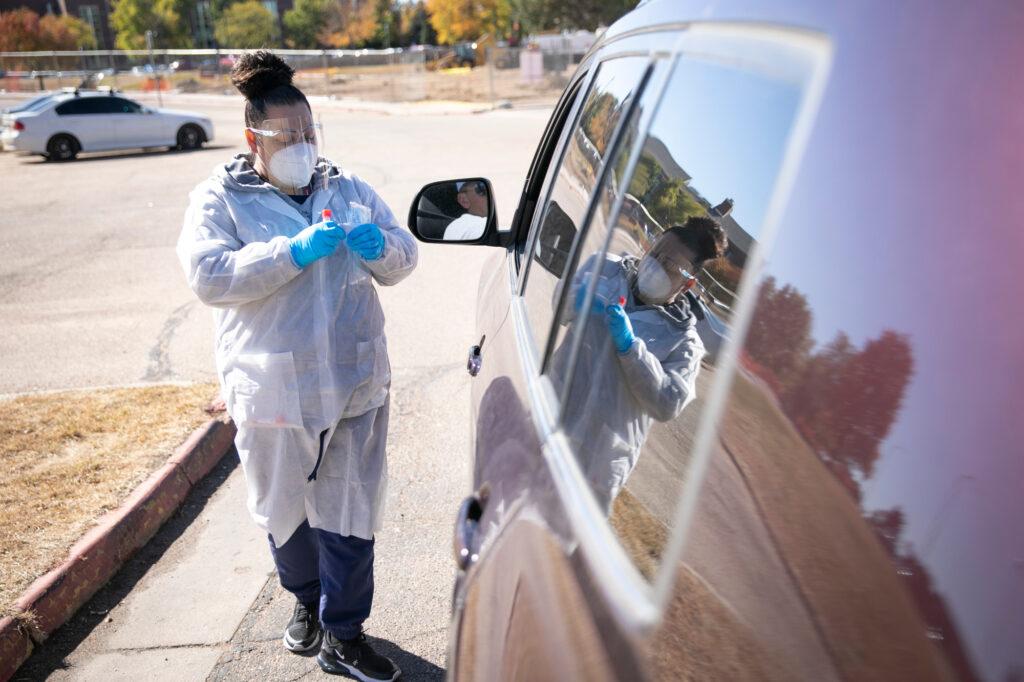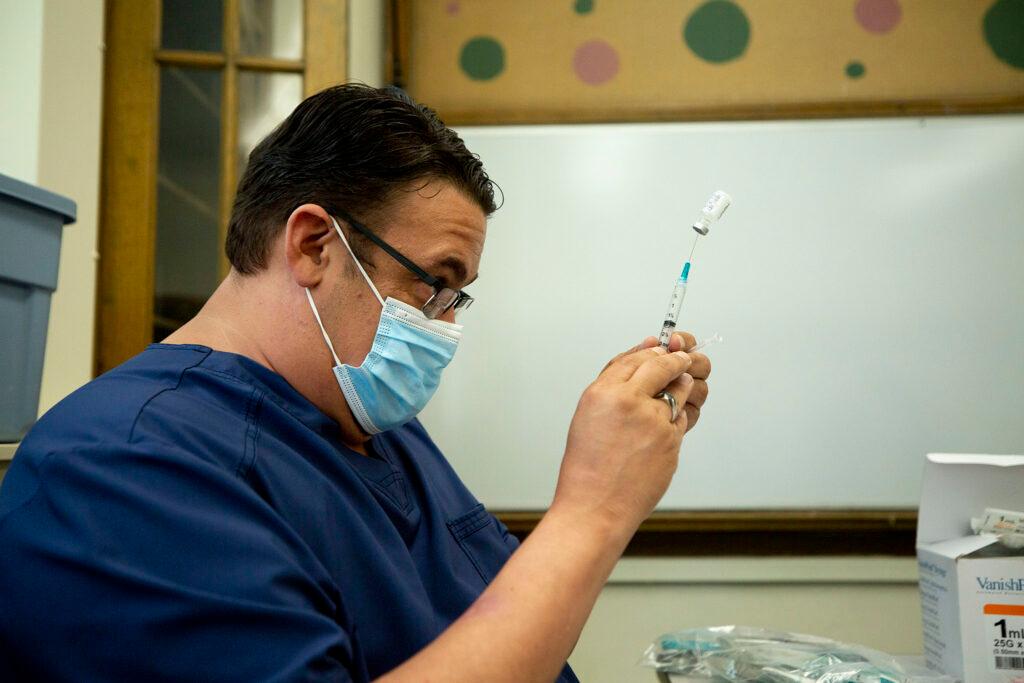
It’s very likely you know someone who has tested positive for COVID-19 recently.
With the omicron variant speeding across the country, Colorado has seen record-setting days when it comes to new cases and test positivity rates.
On New Year’s Eve, the state saw 11,018 new cases of COVID-19. That was a new one-day record, and it came after back-to-back days of more than 9,000 positive cases.
Meanwhile, nearly 25 percent of people getting tested for COVID-19, are getting positive results. Public health officials consider 5 percent as the danger zone for positivity rates.
Is Colorado headed back to the scary days of March or November of 2020? Probably not, but answering that question is complicated.
There are so many different factors to consider when it comes to omicron and whether we should adjust our behaviors.
- Personal factors: Are you vaccinated — including with the third shot?
- Household factors: Do you have people in your home who can’t or won’t get vaccinated?
- Public Factors: Thinking about the strain on hospitals and health care workers — or anyone else who might have to lose five days of work because they are quarantining.
Let's run through these.
How will it affect you or your home if people are vaccinated or not vaccinated?
Currently, preliminary research tells us that omicron isn’t as dangerous for people who are fully vaccinated, meaning with three shots, including the booster shot. Hospitalization or serious illness are much, much lower if you’ve gotten boosted. People who are vaccinated can still get the omicron variant. But the symptoms tend to be mild and short-lived.
Dr. Richard Zane is the director of emergency services at UCHealth.
“It is a really bad time to be unvaccinated. It is exceptionally bad. It has never been a good time, but it is really bad now,” Zane said.
According to state data, about 80 percent of people who are currently hospitalized are unvaccinated.
How will it affect people in your life?
Even if you are vaccinated and just feel like you have a cold, giving someone else omicron could have a huge impact on their life. If they’re unvaccinated, they are more likely to be seriously ill.
“People have to decide what their own risk tolerance is because it's not just about them getting sick. It's about getting other people sick [...] other people they live and interact with,” Zane said.

What about everyone else?
When it comes to the public, it’s about the numbers. The more people become infected with COVID-19, the more inevitable it is that some people will fall seriously ill.
Right now, with omicron, more COVID-19 tests are coming back positive than at any stage of this pandemic. About one in every four people tested are positive for COVID.
Colorado State University professor Jude Bayham works with the Colorado COVID-19 Modeling Group. He is also in the department of epidemiology at the Colorado School of Public Health. The modeling group released a statement on Monday sounding the alarms about the record number of cases and what that means for the trajectory of the omicron wave. He said the test positivity rate is concerning.
“A couple days ago it hit 24 percent,” Bayham said. “It hasn't hit that high since March of 2020.”
And, even though a lot of those cases are mild, just the sheer volume of cases means there is a higher probability that some people will get severely sick and be hospitalized.
“Cases always lead to hospitalizations. So we're watching that number as it unfolds each day,” Bayham said.
The rising case numbers have made him change some plans in his own life.
“My wife's birthday is coming up and I have apologized to her and told her that we're gonna delay any sort of celebrations,” Bayham said. “We have a preschooler [...] and we're going to keep her out for a little bit.”
In its statement, the modeling group also said that even though omicron appears to be milder than the delta variant, the sheer number of cases could overload the health care system.
What does that mean for the hospitals if people need to go for help? Or the people who work there?
Health care workers are already exhausted, and the omicron wave is putting more strain on them. On Tuesday, during a press conference in Denver, Kathy Howell, chief nursing executive at UC Health said she is the most worried as she’s ever been.
“This is probably gonna be the scariest point of this pandemic over the next month,” Howell said.
She is concerned about staffing and about space. For example, the ICU at UCHealth on Tuesday was about 98 percent full and they are over-capacity for all their acute care beds.
According to state data, half of the hospitals expect a staffing shortfall in the next week.
There are contingency plans so they can maintain care with an influx of COVID patients. But Howell says the situation still creates what she calls “moral distress” for health care workers when they have to put off surgeries for their patients.
“These are patients with cancer diagnoses, etc, that really need their surgery done,” Howell said. “They're not gonna die today. If we don't do their surgery, they're not emergent, but boy, if that was you and you had a cancer diagnosis, you'd want your surgery done as soon as you can.”
Hospitals still have to take patients — any patients, not just those with COVID. But Dr. Connie Price, the chief medical officer at Denver Health said that care isn’t as timely as it should be and in some cases patients will be transferred to hospitals out of town and away from their families.

What about schools?
More children are being hospitalized because more children are getting infected with omicron. And because the vaccine is the best way to protect yourself – that leaves out some kids. Many are still unvaccinated because children younger than 5 can’t be, while kids 5 to 11 still can’t get a booster at this point.
The good news is the FDA did just approve a booster shot for kids ages 12 to 15. And even though the number is rising, the actual number of kids getting hospitalized is still relatively small. The state breaks it down into 0-9-year-olds, and 10-19-year-olds. Those two age groups combined are a little over 5 percent of people hospitalized with COVID.
A doctor at Children’s Hospital noted that more kids are coming to the hospital with behavioral health issues. (That increases the strain on hospitals, but it isn’t actually about COVID infections.)
For kids, health care leaders seem to still favor keeping schools open. Closing them is too hard on student mental health. So social distancing and mask wearing are a better alternative. The problem is omicron is also creating staffing shortages at schools.
“There's one lesson from the pandemic, which we should learn and continue for the rest of eternity, which is: If you are ill with a contagious disease, regardless of what it is, you should not go to work or school,” Zane said.
How long will this wave last?
According to the data the modeling group is seeing, Bayham said that omicron appears to come on very fast and the wave is exceptionally steep, but it drops off quickly as well.
The hope now is that the stress on the workforce — especially in places like hospitals and schools — will also ease up quickly.
And according to Zane, we are more prepared and know more now than we did last year.
“We've learned some really great things over the last two years. We've learned how it spreads. We've learned when the peak contagious time is for the most part,” Zane said, “It changes each variant, which is why the CDC went from 10 days to seven days to five days. It's not just workforce preservation. It's also about what people can tolerate, what society can tolerate and what we've learned.”
CPR's Claire Cleveland contributed to this report.








